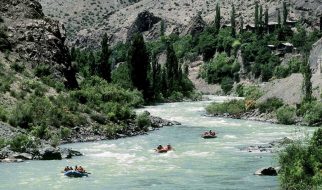In a world dominated by consumers, it seems that for every one social media marketing strategy there comes an abundance of obstacles. The act of consuming advertising no longer lies in the power of a single marketing team but instead is decided on by the consumer.
Although noise on social media can turn consumers off to advertising as a whole, the brands who are doing it right are credited as so much more than just a clothing store, a food chain, a company, etc. When companies can consider ?word of mouth? or a lifestyle a successful marketing source it is fair to assume their message has been successful and deeply rooted.
 via Google.
via Google.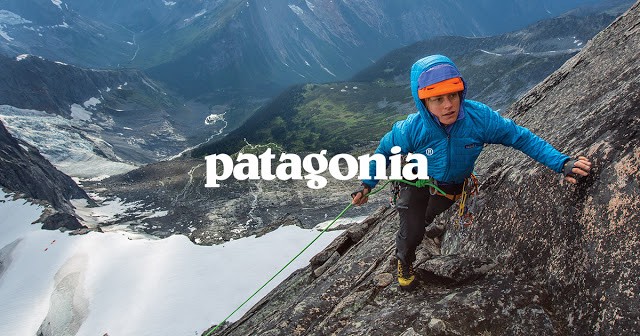 via Google.
via Google.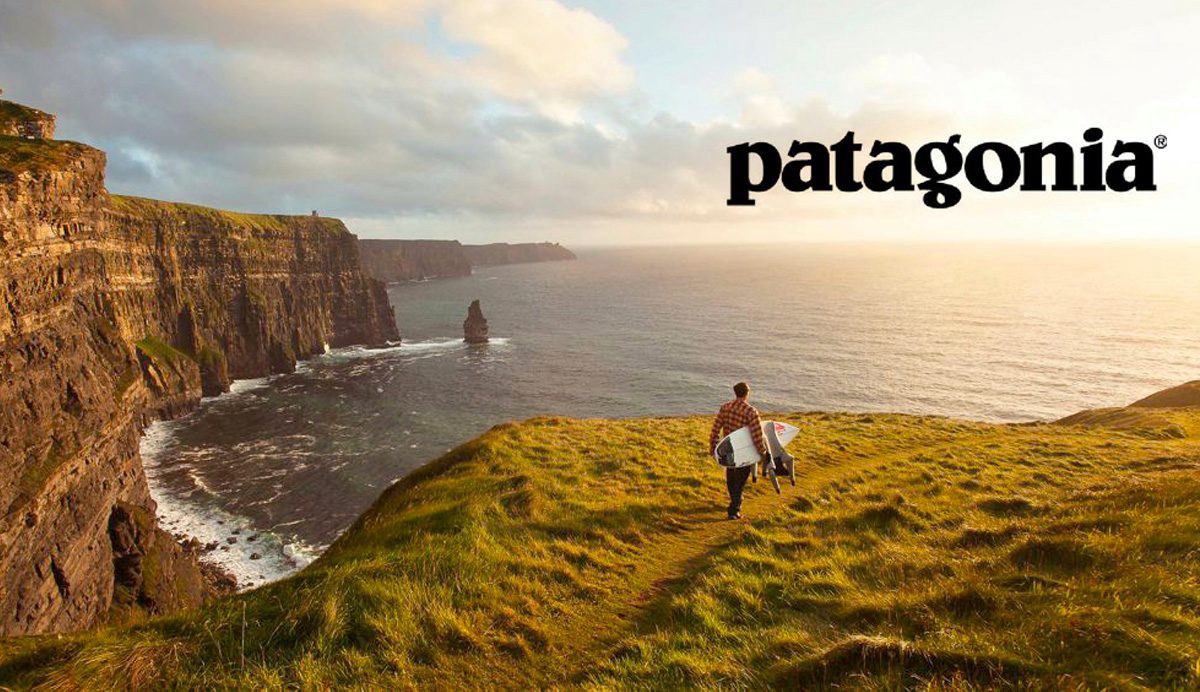 via Google.
via Google.
Without any precursor, it is assumed that Patagonia is a brand devoted to the outdoors. Devoted to the people of the outdoors, the natural sport of the outdoors and of course, the enjoyment of the outdoors. An image that solely shows the name of the brand is powerful in itself, it requires no action, no effort and no commitment of viewer? but rather invites to choose to figure out what Patagonia is. A simple typography of one word plastered on various photos of people living one unified lifestyle, one of connection between man and nature. The question then becomes, what is Patagonia doing to foster this simplicity and great success?
The heavy reliance on technology has enabled, and often encouraged brands to move away from the traditional ?4 Ps? and for those who do it right, it brings great success that simply cannot be fostered in traditional methods. It is important that brands take advantage of non-traditional strategies in order to reach consumers in their personal time, and worry about evoking emotion and worth in every point of contact. The two-way communication of social media landscapes makes these hard waters to tread. It is no longer about the ad but rather what consumers you can share experiences with. Hence the ?lifestyle? branding of Patagonia.
Whether the company is executing traditional or non-traditional campaigns they use controversial, unconventional methods. Their website not only provides a place for you to spend your money but also provides you with a space to find information, interaction, and activism on topics and issues you are most likely interested in and compassionate about. Patagonia provides a network for you to get lost in, there are linked partnerships that engage consumers, and unique content that enables individuals to becomes active and no longer passive consumers.
With large concerns of their environmental impact, Patagonia conveniently supports and provides insights on initiatives devoted to reducing impacts. WornWear is their sister company which ?celebrates the stories we wear, keeps your gear in action longer through repair and reuse, and recycle your garments when they?re beyond repair?. It subconsciously entices the consumer who is worried about all the things it aims to lessen or eliminate. Consumers can feel better buying a Patagonia fleece knowing its second life will be waiting. If sharing the same beliefs with the brand is not enough, WornWear shares the beliefs of its current consumers.
Worn Wear – 6 Seasons of Tree Planting. Robyn Klinkman….
6 Seasons of Tree Planting. Robyn Klinkman. British Columbia, CA.Dear Patagonia, This thrifted patagonia fleece has?
wornwear.tumblr.com
And if consumption repurposing is not sufficient, Patagonia also has the activist front covered. Patagonia Action Works supports ?grassroots activists working to find solutions to the environmental crisis? connecting individuals with our grantees in order to take action on the most pressing issues facing the world today?. Using a product or associating yourself with a brand that is deeply rooted in all the same things as you is yet another factor placing Patagonia on the forefront of brands today.
On top of the lifestyle they support and enable, their true marketing also embodies these strong messages. In one of their most noteworthy campaigns, the company published ads in the New York Times with one of their best selling jackets encouraging consumers to not buy this jacket.
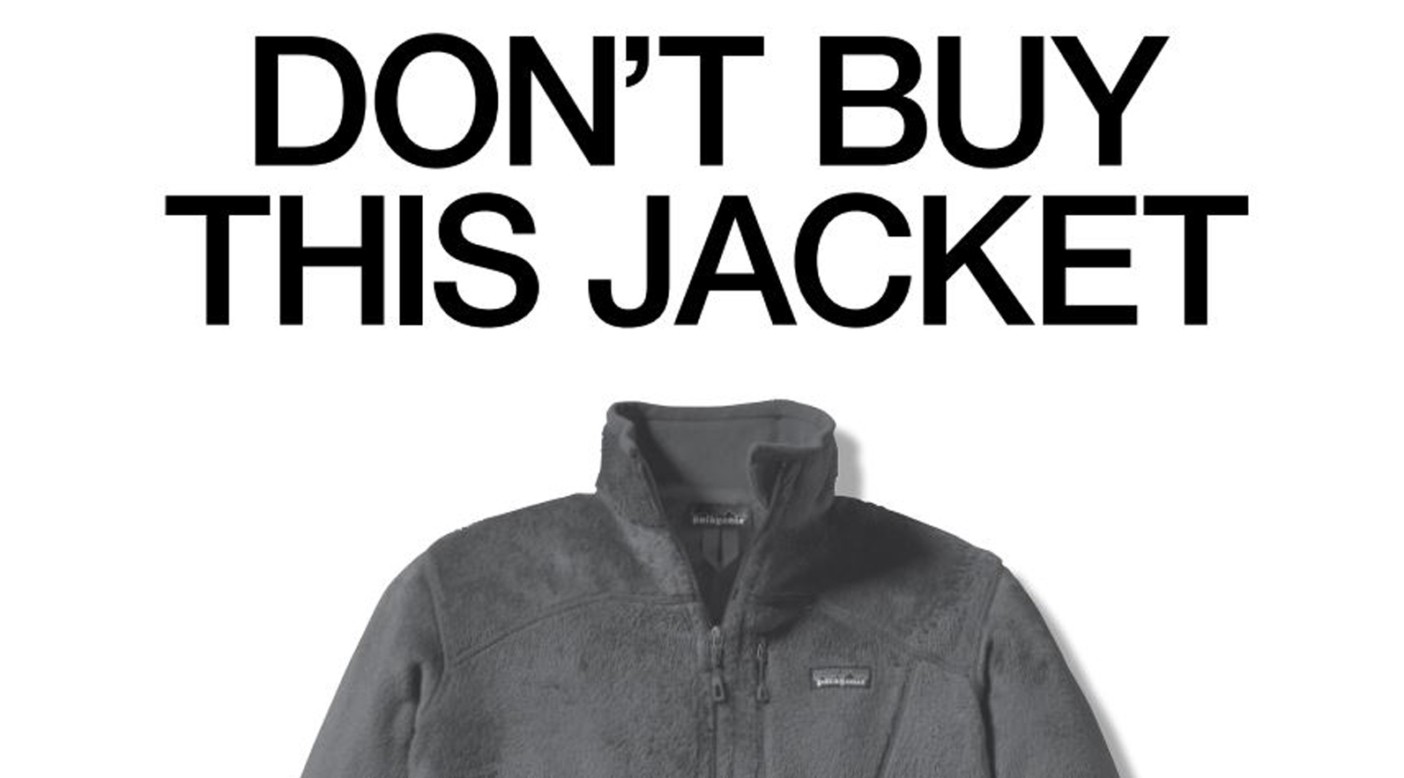 via Google.
via Google.
Patagonia believes so deeply in sustainability and purposeful-consumption that they encouraged society just before Black Friday to refrain from buying their product, and whatever else they don?t actually need. What better way to target individuals driven in benefitting their environment and supporting sustainable companies by showing them you feel the same way. In addition, since this well-articulated campaign, Patagonia has donated 100% of their Black Friday sales to organizations that help the planet, subconsciously helping customers justify their purchases. Rather than attempting to advertise to sell products, Patagonia has devoted their brand to providing consumers with content and products that will benefit their lives and interests.
Through short-films,
via YouTube.
lifestyle stories,
via YouTube.
participatory events,
 via Google.
via Google.
and campaigns,
Environmental Campaigns – Patagonia
Patagonia is committed to bringing our resources and connections to bear on threats to wildness, far and wide. Let’s?
www.patagonia.com
the brand has been able to associate and embody their high-quality, long-lasting products in the lives of many around the world. It is not just a product found in a department store but rather something a group of individuals can identify with and be recognized for. Overall, it is clear that Patagonia has built and maintained a successful platform for themselves and in comparison to similar outdoor gear brands, this success is amplified.
Consider a brand such as The North Face, producing similar gear for similar activities but lacking the same identity as Patagonia. The North Face is a company focused on the growth of their products whereas Patagonia places their biggest interest in the impacts they inflict on the planet. Arguably, when providing a product that encourages enjoyment of the environment for people who are simply trying to do just that, a focus on the sustainability and impact of the product will resonate most effectively.
The North Face states that they will do their part to protect the places where we live, play, and operate while improving their environmental performance and responsibility in the supply chain. Seemingly great these statements are similar to the views of Patagonia, it is when you compare the action taken by The North Face in comparison to Patagonia that the differences become apparent.
With just a quick visit to each website, it becomes clear that the message each brand is built on is in fact not so similar:
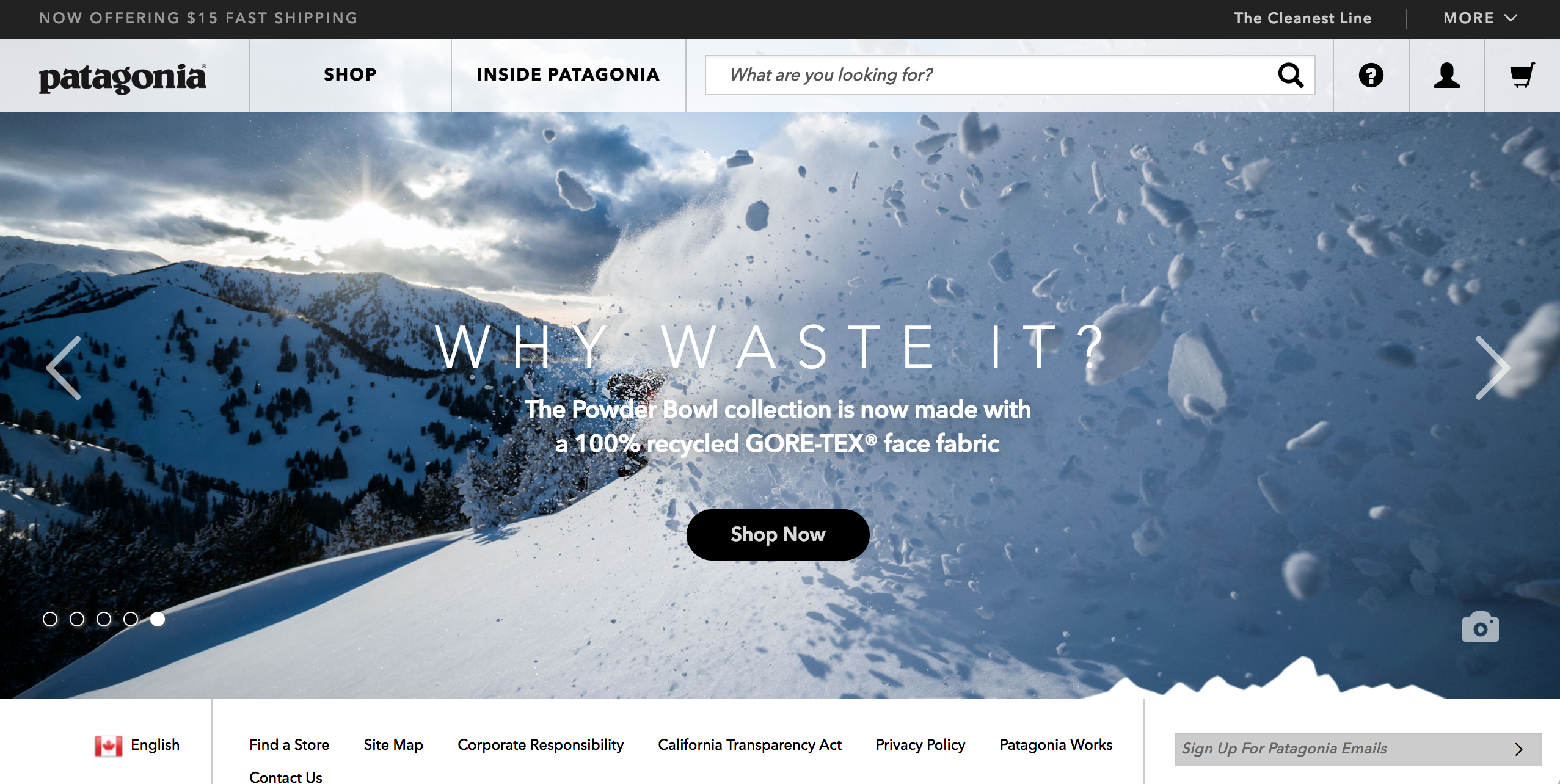 via Patagonia.
via Patagonia.
Patagonia’s home page exhibits a few crucial elements of their identity, with the biggest piece of the page reading ?WHY WASTE IT??. This does the work itself, capturing someone who is looking for a product that enables them to enjoy the environment they care deeply about. The effort needed to promote Patagonia?s 100 % recycled Powder Bowl collection is done through the views and values associated with the product itself. It targets the beliefs and lifestyle choices of a particular audience of consumers, making it much easier for a customer to buy the product that embodies the same values as their personal ones, instead of exploring and comparing various brands claiming to offer similar products.
Not only does the homepage automatically entice the environmentally conscious but it provides them with direct links to get involved and take action in the issues threatening our environment:
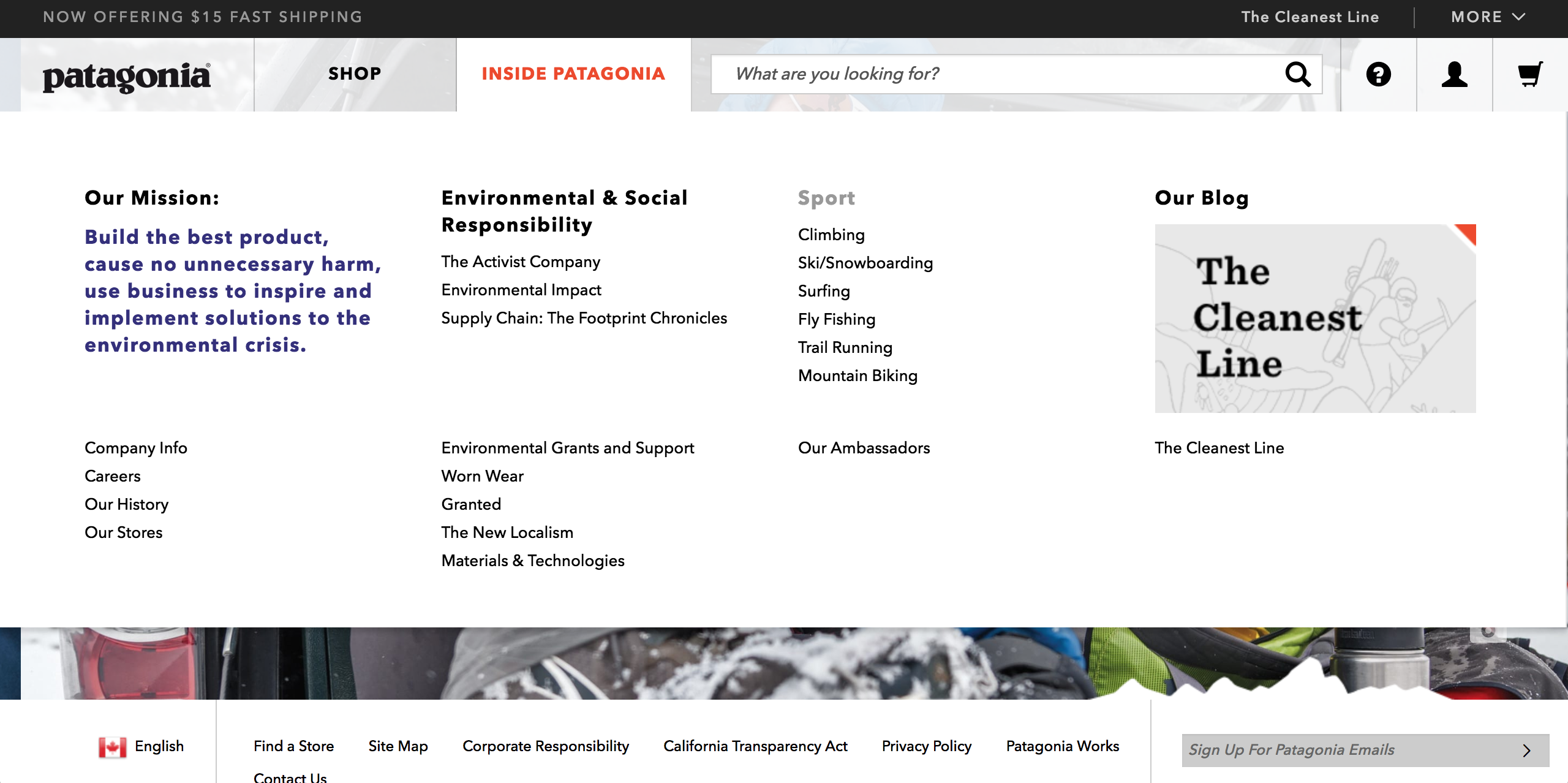 Via Patagonia.
Via Patagonia.
Associating a piece of material with the issues that are changing lives and landscapes creates a much larger attraction than the one associated with owning a new piece of clothing. This is a concept that differs Patagonia so greatly from its competitors. The North Face homepage is a great example of the difference between promoting a lifestyle and a product:
 via The North Face.
via The North Face.
The home page of The North Face strictly promotes consumer practices, as the largest text found on their homepage is the name of a new holiday collection. The ad encourages people to buy a product and look a certain way rather than live a certain lifestyle. The claim made by The North Face to be invested in bettering our environment is one that appears only through words. It is an easy statement that targets those who need a product of this nature, it is a statement that makes consumers feel content without the hard work required to preserve the environment. The North Face website separates them from Patagonia as it asks visitors to view their collections, focus on their products, and most importantly, consume.
Patagonia is focused on reducing their footprint and encouraging consumers to do the same while competitors such as The North Face are working to drive ads that will increase annuals earnings. Patagonia is not only saying what they want in the world and taking action but also selling used and repurposed products to ensure this message is being sent. Patagonia ensures each product has lived its longest life rather than become a victim of consumer bordem. The North Face is pushing similar products to similar people, but perhaps more to those in the market with more of a consumer-based outlook. Arguably, those who are buying Patagonia are buying it because of its promises and impacts on the environment. The product tends to be more expensive and therefore harnesses a more conscious buyer, one that can commit to the big purchase because of the things it embodies or promises them as the owner.
Essentially, Patagonia is a company focused on a vision that their product conveniently sells. In order for Patagonia to keep dominating this front, they must produce and maintain a product of the highest quality and share it in a minimalistic manner. In a way that embodies sustainability, and practical consumption. It is important to understand that you and Patagonia are winning if you are the proud owner of your 10-year-old fleece, are not looking for a new one, and are not actively buying from other brands either. It means you are embracing your weathered items and committing to real change.
This lifestyle branding calls for a change in the way we pay the companies we trust, it means ignoring the calls to consumption and paying the price only when that 20-year-old coat no longer protects you from the climates.
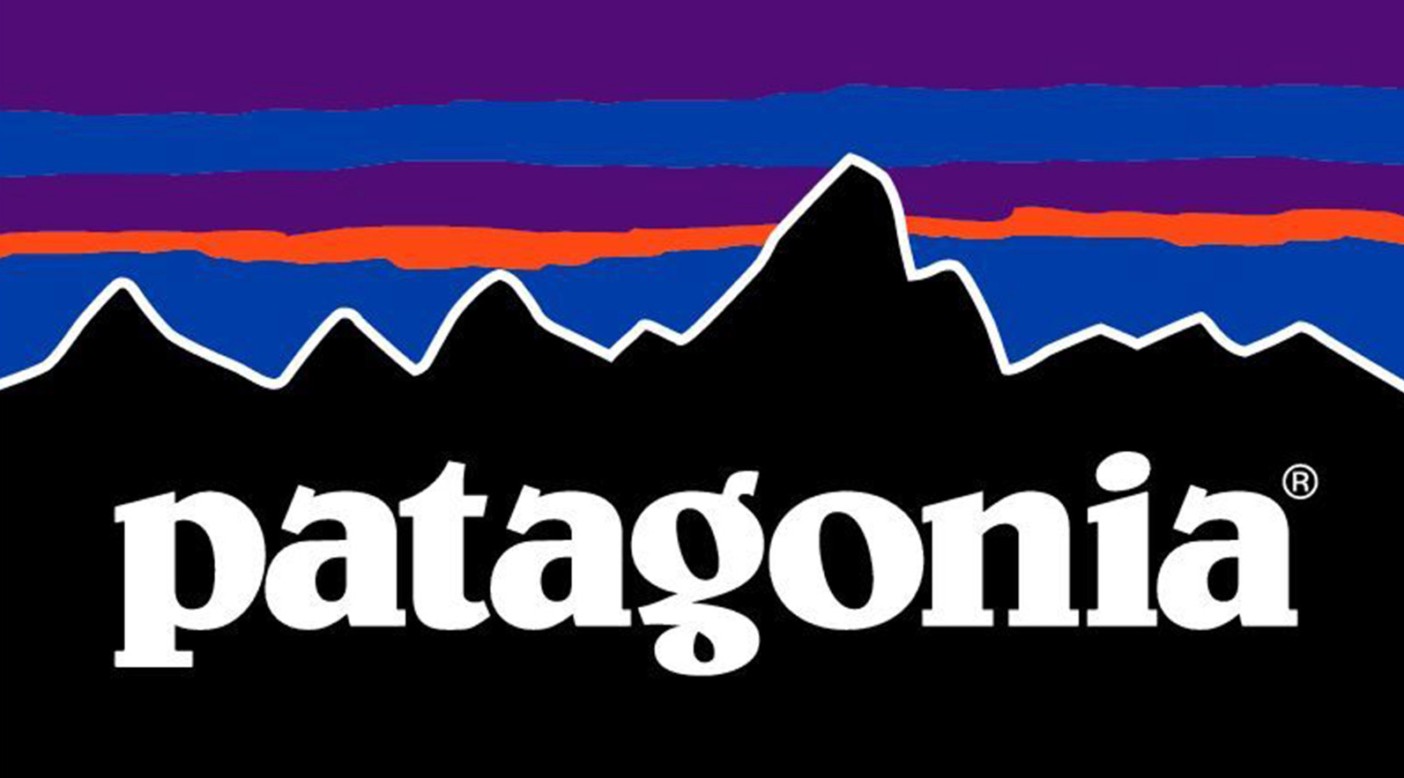 via Google.
via Google.
It’s about finding a brand that understands you, instead of targets you. It?s understanding that being a part of a brand doesn?t mean endless spending. And as a brand, it?s about fitting a community?s story not making a story for a community to try and fit in ? and Patagonia has done a damn good job fitting that story. They have determined what makes their consumers tick and have found a way to seamlessly trigger these ticks.


